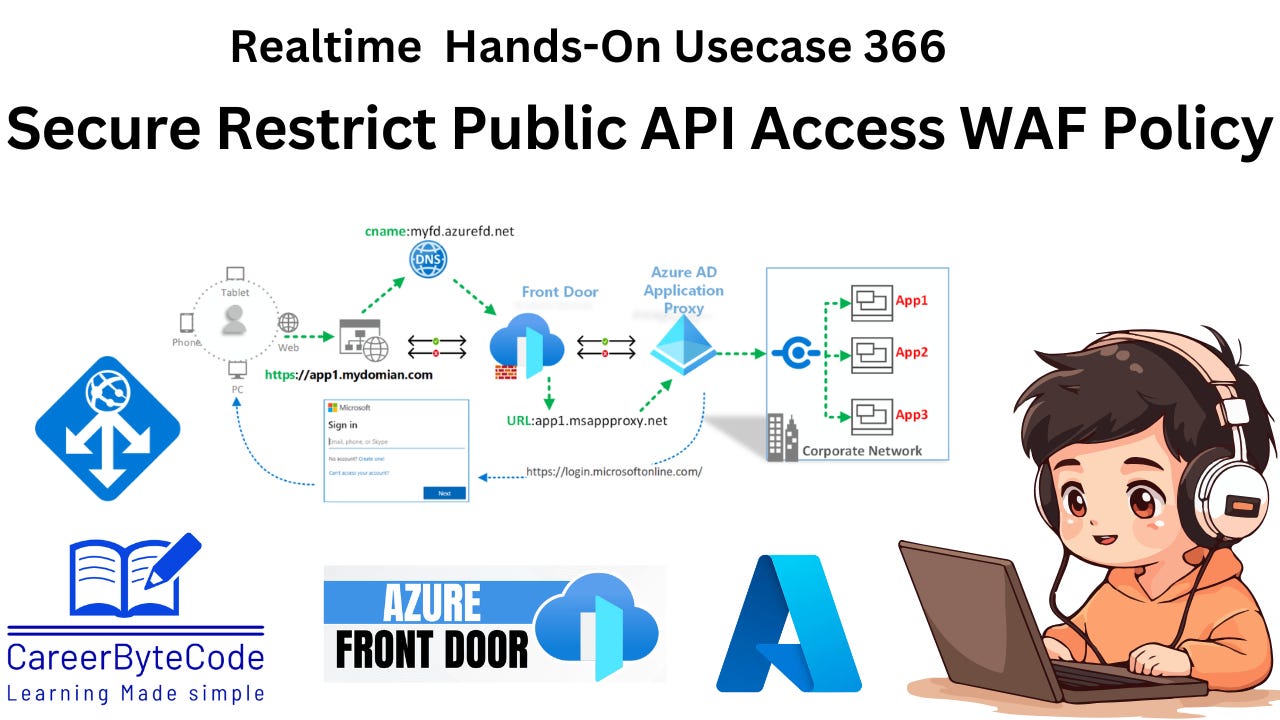No More Open Doors: Locking Down APIs with Azure Front Door and Web Application Firewall
APIs are critical to modern applications and are often targeted by attackers aiming to exploit vulnerabilities. Implementing a robust security strategy is essential to safeguard APIs against various t
1. Problem Statement
As enterprises increasingly rely on APIs to expose business functionality to clients, partners, and third-party applications, ensuring the security of these APIs becomes mission-critical. APIs hosted in Azure API Management (APIM) are attractive targets for cyber threats such as SQL injection, cross-site scripting (XSS), DDoS attacks, malicious bots, and other OWASP Top 10 vulnerabilities.
While Azure API Management provides powerful management capabilities like throttling, authentication, and logging, it does not provide Layer 7 security protection by default. Without a security enforcement layer like a Web Application Firewall (WAF), APIs remain vulnerable to a variety of advanced web-based attacks.
Additionally, if APIs are exposed through APIM’s public endpoint, attackers can bypass security controls and access the APIs directly, even if Azure Front Door and WAF are configured. This creates a security loophole where WAF policies are ineffective unless API traffic is strictly routed through a protected path.
To address these risks, organizations must implement a secure design pattern that:
Routes all traffic to APIs through Azure Front Door (AFD).
Attaches an Azure WAF policy with managed rule sets to detect and prevent web-based attacks.
Configures header validation policies in APIM to reject any requests that do not originate from Azure Front Door.
Enables monitoring and logging for security visibility and compliance.
However, configuring and validating this setup is often complex, especially for teams new to cloud-native security practices. Key challenges include:
Setting up Azure Front Door correctly with APIM as an origin.
Attaching the right WAF policy with custom and managed rules.
Restricting APIM public access while maintaining high availability.
Testing and tuning WAF rules to avoid false positives or broken functionality.
Monitoring WAF logs to detect real-time threats and compliance violations.
Therefore, this use case focuses on building a complete end-to-end lab environment that allows users to deploy a sample API, protect it using Azure Front Door and WAF, and validate the security implementation through attack simulation and logging. This not only strengthens security posture but also prepares cloud engineers, DevOps professionals, and security teams for real-world implementation and interviews.
2. Why We Need This Use Case
APIs are critical to modern applications and are often targeted by attackers aiming to exploit vulnerabilities. Implementing a robust security strategy is essential to safeguard APIs against various types of attacks. Azure Web Application Firewall (WAF) provides a comprehensive security layer to protect APIs from OWASP Top 10 threats, known vulnerabilities, and malicious bot attacks. Using Azure WAF in conjunction with Azure Front Door can effectively shield your APIs hosted on Azure API Management from these security risks.
3. When We Need This Use Case
API-First Approach: When transitioning to an API-first development approach and need to ensure that your APIs are secure from the outset.
Increasing Cyber Threats: When facing a growing number of cyber threats and seeking to enhance the security of your API endpoints.
Compliance Requirements: When you need to meet regulatory or compliance requirements that mandate the protection of web applications and APIs.
New API Deployment: When deploying new APIs and you want to implement security best practices from the beginning.



